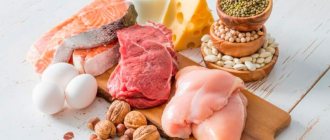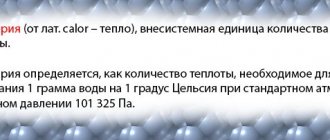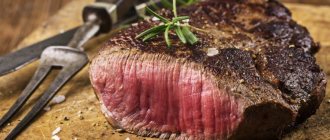AMINO ACIDS OF PROTEINS
PROTEIN BIOSYNTHESIS ON RIBOSOME
Amino acids - (aminocarboxylic acids; amc) - organic compounds, the molecule of which simultaneously contains carboxyl and amine groups (amino groups). Those. amino acids can be considered as derivatives of carboxylic acids in which one or more hydrogen atoms are replaced by amino groups.
- The carboxyl group (carboxyl) -COOH is a functional monovalent group that is part of carboxylic acids and determines their acidic properties.
- Amino group is a functional chemical monovalent group -NH2, an organic radical containing one nitrogen atom and two hydrogen atoms.
More than 200 naturally occurring amino acids are known , which can be classified in different ways. Structural classification is based on the position of functional groups at the alpha, beta, gamma or delta position of the amino acid.
In addition to this classification, there are others, for example, classification by polarity, pH level, and also the type of side chain group (aliphatic, acyclic, aromatic amino acids, amino acids containing hydroxyl or sulfur, etc.).
In the form of proteins, amino acids are the second (after water) component of muscles, cells and other tissues of the human body. Amino acids play a critical role in processes such as neurotransmitter transport and biosynthesis.
When is supplemental amino acid supplementation necessary?
Athletes can consume amino acids during training periods to improve athletic performance, build muscle faster, and facilitate recovery after exercise. During cutting, amino acids help preserve muscles while accelerating the weight loss process.
If your daily activities involve high mental stress, amino acids will help relieve excessive stress and increase intellectual productivity.
In addition, taking amino acids will not be superfluous if you consume little animal protein or are a vegetarian. The fact is that plant amino acids are much less absorbed by the body, which can lead to deficiencies.
General structure of amino acids. Alpha amino acids. Isomerization of amino acids.
Amino acids are biologically important organic compounds consisting of an amino group (-NH2) and a carboxylic acid (-COOH), and having a side chain specific to each amino acid. The key elements of amino acids are carbon, hydrogen, oxygen and nitrogen. Other elements are found on the side chain of certain amino acids.
Rice. 1 - General structure of α-amino acids that make up proteins (except proline). The components of an amino acid molecule are the amino group NH2, the carboxyl group COOH, the radical (different for all α-amino acids), the α-carbon atom (in the center).
In the structure of amino acids, the side chain specific to each amino acid is designated by the letter R. The carbon atom adjacent to the carboxyl group is called an alpha carbon, and amino acids whose side chain is linked to this atom are called alpha amino acids. They are the most common form of amino acids found in nature.
In alpha amino acids, with the exception of glycine, the alpha carbon is a chiral carbon atom. Amino acids whose carbon chains are attached to an alpha carbon (such as Lysine (L-lysine)) have carbons designated alpha, beta, gamma, delta, and so on. Some amino acids have an amino group attached to the beta or gamma carbon and are therefore called beta or gamma amino acids.
Based on the properties of their side chains, amino acids are divided into four groups. The side chain can make the amino acid a weak acid, a weak base, or an emulsoid (if the side chain is polar), or a hydrophobic substance that does not absorb water well (if the side chain is nonpolar).
The term "branched chain amino acid" refers to amino acids that have aliphatic non-linear side chains, these are Leucine, Isoleucine and Valine.
Proline is the only proteinogenic amino acid that has a side group attached to the alpha amino group and is thus also the only proteinogenic amino acid containing a secondary amine at this position.
From a chemical point of view, proline is thus an imino acid because it lacks a primary amino group, although in current biochemical nomenclature it is still classified as an amino acid as well as an "N-alkylated alpha amino acid" (Imino acids are carboxylic acids containing an imino group (NH). They are part of proteins, their metabolism is closely related to the metabolism of amino acids. In their properties, imino acids are close to amino acids, and as a result of catalytic hydrogenation, imino acids are converted into amino acids. Imino group is a molecular group of NH. Divalent. Contained in secondary amines and peptides. The divalent ammonia radical does not exist in its free form).
ALPHA AMINO ACIDS
Amino acids , having both an amine and a carboxyl group attached to the first (alpha) carbon atom, are of particular importance in biochemistry. They are known as 2-, alpha, or alpha-amino acids (the general formula in most cases is H2NCHRCOOH, where R represents an organic substituent known as a "side chain"); often the term "amino acid" refers specifically to them.
These are 22 proteinogenic (that is, “protein-building”) amino acids that are combined into peptide chains (“polypeptides”), ensuring the construction of a wide range of proteins. They are L-stereoisomers ("left-handed" isomers), although some of the D-amino acids ("right-handed" isomers occur in some bacteria and some antibiotics).
Rice. 2. Peptide bond is a type of amide bond that occurs during the formation of proteins and peptides as a result of the interaction of the α-amino group (-NH2) of one amino acid with the α-carboxyl group (-COOH) of another amino acid.
From two amino acids (1) and (2) a dipeptide (a chain of two amino acids) and a water molecule are formed. According to the same scheme, the ribosome generates longer chains of amino acids: polypeptides and proteins. Different amino acids, which are the “building blocks” of protein, differ in the R radical.
OPTICAL ISOMERISM OF AMINO ACIDS
Rice. 3. Optical isomers of the amino acid alanine
Depending on the position of the amino group relative to the 2nd carbon atom, α-, β-, γ- and other amino acids are distinguished. For the mammalian body, α-amino acids are most characteristic. All α-amino acids found in living organisms, except glycine, contain an asymmetric carbon atom (threonine and isoleucine contain two asymmetric atoms) and have optical activity. Almost all naturally occurring α-amino acids have the L configuration, and only L-amino acids are included in proteins synthesized on ribosomes.
All standard alpha amino acids, except glycine, can exist in the form of one of two enantiomers , called L or D amino acids, which are mirror images of each other.
D, L - Designation system for stereoisomers.
According to this system, the L-configuration is assigned to a stereosomer, in which in the Fischer projection the reference group is located to the left of the vertical line (from the Latin “laevus” - left). It must be remembered that in the Fischer projection the most oxidized carbon atom is located at the top (as a rule, this atom is part of the carboxyl COOH or carbonyl CH=O group). In addition, in the Fisher projection, all horizontal connections are directed towards the observer, and vertical connections are removed from the observer. Accordingly, if the reference group is located in the Fischer projection on the right, the stereoisomer has a D configuration (from the Latin “dexter” - right). In α-amino acids, as reference groups.
Enantiomers are a pair of stereoisomers that are mirror images of each other and cannot be combined in space. A classic illustration of two enantiomers is the right and left palms: they have the same structure, but different spatial orientation. The existence of enantiomeric forms is associated with the presence of chirality - the property of not being combined in space with its mirror image. Amino acids are examples of chiral molecules.
Enantiomers are identical in physical properties. They can be distinguished only when interacting with a chiral environment, for example, light radiation. Enantiomers behave identically in chemical reactions with achiral reagents in an achiral environment. However, if the reagent, catalyst, or solvent is chiral, the reactivity of the enantiomers tends to differ. Most chiral natural compounds (amino acids, monosaccharides) exist in the form of 1 enantiomer. The concept of enantiomerism is important in pharmaceuticals because Different enantiomers of drugs have different biological activities.
Why are amino acids needed in sports nutrition?
Any amino acids are useful for athletes, it’s just that each of them has certain properties, taking into account which a specific supplement must be selected. It all depends on the goal:
- ensure muscle growth;
- increase strength and endurance;
- reduce body fat;
- increase productivity during training;
- speed up recovery after training (physical and mental);
- improve intellectual activity of the brain, etc.
When choosing supplements, the type of sport is of particular importance. For example, amino acids for runners are necessary for long-term training, acceleration, and running uphill. If after training you find it difficult to lift your legs, it means that your muscles are overloaded and need support. Amino acids can be used as this.
BCAA is especially effective for runners - the main sports supplement that helps in recovery and increasing endurance. For prolonged exercise, it is recommended to take 3-5 g before or during training. This will help you recover faster for the next competition day. Isotonic drinks, taken directly while running or other types of training, will also help avoid fatigue.
We advise you to study: “Why is isotonic for an athlete.”
Amino acids in bodybuilding are used primarily for the following purposes:
- to restore muscles after training;
- maintain muscle mass when cutting or losing weight;
- stimulate muscle growth.
Thus, this is what amino acids are needed for in sports:
- Provide the body with energy. Unlike carbohydrates, amino acids are metabolized differently, which provides muscles and the body as a whole with much more energy.
- Accelerate protein production. Amino acids provide two conditions important for muscle growth: they activate mTOR (a protein that regulates cell growth and division) and stimulate the production of insulin (an anabolic hormone).
- Suppress catabolism. The anti-catabolic effect helps prevent muscle breakdown that occurs after exercise, as well as during active weight loss.
- Burn excess fat deposits. Acids are involved in regulating the level of leptin, a peptide satiety hormone that, penetrating into the hypothalamus, suppresses appetite and makes a person feel full.
Together, these properties help athletes lose weight, increase muscle size, train more effectively and improve their athletic performance.
PROTEIN BIOSYNTHESIS ON RIBOSOME
STANDARD AMINO ACIDS
(proteinogenic)
See the topic: Illustrations and videos and
During protein biosynthesis, 20 α-amino acids, encoded by the genetic code, are included in the polypeptide chain (see Fig. 4). In addition to these amino acids, called proteinogenic, or standard, some proteins contain specific non-standard amino acids that arise from standard ones during the process of post-translational modifications.
Note: Recently, translationally included selenocysteine and pyrrolysine are sometimes considered to be proteinogenic amino acids. These are the so-called 21st and 22nd amino acids.
Amino acids are the structural compounds (monomers) that make up proteins. They combine to form short polymer chains called long chain peptides, polypeptides or proteins. These polymers are linear and unbranched, with each amino acid in the chain joining two adjacent amino acids.
Rice. 5. Ribosome in the process of translation (protein synthesis)
The process of building a protein is called translation and involves the step-by-step addition of amino acids to the growing protein chain through ribozymes, carried out by the ribosome. The order in which amino acids are added is read into the genetic code using an mRNA template, which is an RNA copy of one of the body's genes.
Translation - protein biosynthesis on the ribosome
Rice. 6 Stages of polypeptide elongation.
Twenty-two amino acids are naturally found in polypeptides and are called proteinogenic, or naturally occurring, amino acids. Of these, 20 are encoded using the universal genetic code.
The remaining 2, selenocysteine and pyrrolysine, are incorporated into proteins using a unique synthetic mechanism. Selenocysteine is formed when the translated mRNA includes a SECIS element causing a UGA codon instead of a stop codon. Pyrrolysine is used by some methanogenic archaea as part of the enzymes needed to produce methane. It is encoded with a UAG codon, which usually acts as a stop codon in other organisms. The UAG codon is followed by a PYLIS sequence.
Rice. 7. Polypeptide chain is the primary structure of a protein.
Proteins have 4 levels of their structural organization: primary, secondary, tertiary and quaternary. Primary structure is the sequence of amino acid residues in a polypeptide chain. The primary structure of a protein is usually described using one-letter or three-letter designations for amino acid residues. Secondary structure is the local ordering of a fragment of a polypeptide chain, stabilized by hydrogen bonds. Tertiary structure is the spatial structure of a polypeptide chain. Structurally, it consists of secondary structure elements stabilized by various types of interactions, in which hydrophobic interactions play a critical role. Quaternary structure (or subunit, domain) - the relative arrangement of several polypeptide chains as part of a single protein complex.
Rice. 8. Structural organization of proteins
NON-STANDARD AMINO ACIDS
(Non-proteinogenic)
In addition to standard amino acids, there are many other amino acids that are called non-proteinogenic or non-standard amino acids. Such amino acids are either not found in proteins (eg, L-carnitine, GABA) or are not produced directly in isolation by standard cellular mechanisms (eg, hydroxyproline and selenomethionine).
Non-standard amino acids found in proteins are formed by post-translational modification, that is, modification after translation during the process of protein synthesis. These modifications are often necessary for protein function or regulation; for example, carboxylation of glutamate improves the binding of calcium ions, and hydroxylation of proline is important for the maintenance of connective tissue. Another example is the formation of hypusine into the translation initiation factor EIF5A through modification of a lysine residue. Such modifications can also determine the localization of the protein, for example, the addition of long hydrophobic groups can cause the protein to bind to the phospholipid membrane.
Some non-standard amino acids are not found in proteins. These are lanthionine, 2-aminoisobutyric acid, dehydroalanine and gamma-aminobutyric acid. Non-standard amino acids are often found as metabolic intermediates for standard amino acids—for example, ornithine and citrulline occur in the ornithine cycle as part of acid catabolism.
A rare exception to the dominance of alpha amino acids in biology is the beta amino acid Beta-alanine (3-aminopropanoic acid), which is used for the synthesis of pantothenic acid (vitamin B5), a component of coenzyme A in plants and microorganisms. It is, in particular, produced by propionic acid bacteria.
Functions of amino acids
PROTEIN AND NON-PROTEIN FUNCTIONS
Many proteinogenic and non-proteinogenic amino acids also play important roles unrelated to protein formation in the body. For example, in the human brain, glutamate (standard glutamic acid) and gamma-aminobutyric acid (GABA, a non-standard gamma amino acid) are the main excitatory and inhibitory neurotransmitters. Hydroxyproline (the main component of collagen connective tissue) is synthesized from proline; the standard amino acid glycine is used to synthesize porphyrins used in red blood cells. Non-standard carnitine is used for lipid transport.
Because of their biological significance, amino acids play an important role in nutrition and are commonly used in food additives, fertilizers, and food processing. In industry, amino acids are used in the production of drugs, biodegradable plastics and chiral catalysts.
Amino acids, proteins and nutrition
For information on the biological role and consequences of amino acid deficiency in the human body, see the tables of essential and non-essential amino acids.
When introduced into the human body through food, the 20 standard amino acids are either used to synthesize proteins and other biomolecules or are oxidized into urea and carbon dioxide as an energy source. Oxidation begins with the removal of the amino group through transaminase, and then the amino group is included in the urea cycle. Another transamidation product is a keto acid, which is part of the citric acid cycle. Glucogenic amino acids can also be converted to glucose through gluconeogenesis.
Of the 20 standard amino acids, 8 (valine, isoleucine, leucine, lysine, methionine, threonine, tryptophan and phenylalanine) are called essential because the human body cannot synthesize them independently from other compounds in the quantities necessary for normal growth; they can only be obtained from food. However, according to modern concepts, Histidine and Arginine are also essential amino acids for children. Others may be conditionally essential for people of a certain age or people with certain diseases.
Additionally, Cysteine, Taurine, L-Tyrosine are considered semi-essential amino acids in children (even though taurine is not technically an amino acid) because the metabolic pathways that synthesize these amino acids are not yet fully developed in children. The required amounts of amino acids also depend on the age and health of the individual, so it is quite difficult to give general dietary recommendations here.
PROTEINS
Proteins (proteins, polypeptides) are high-molecular organic substances consisting of alpha amino acids connected in a chain by a peptide bond. In living organisms, the amino acid composition of proteins is determined by the genetic code; in most cases, 20 standard amino acids are used during synthesis.
Rice. 9. Proteins are not only food... Types of protein compounds.
Every living organism is made up of proteins . Various forms of proteins take part in all processes occurring in living organisms. In the human body, muscles, ligaments, tendons, all organs and glands, hair, nails are formed from proteins; proteins are found in fluids and bones. Enzymes and hormones that catalyze and regulate all processes in the body are also proteins. A deficiency of proteins in the body is dangerous to health. Each protein is unique and exists for specific purposes.
NUTRITION AND PROTEIN
Proteins are an important part nutrition (main sources: meat, poultry, fish, milk, nuts, legumes, grains; to a lesser extent: vegetables, fruits, berries and mushrooms), since their bodies cannot synthesize all the necessary amino acids and some should come from protein foods. During digestion, enzymes break down consumed proteins into amino acids, which are used for the biosynthesis of the body's own proteins or are further broken down to produce energy.
| Proteins in the body are not interchangeable. They are synthesized from amino acids, which, in particular, are formed as a result of the breakdown of proteins found in food products. Thus, it is amino acids, and not proteins themselves, that are the most valuable nutritional elements. |
It is worth emphasizing that modern nutrition science claims that protein should satisfy the body's needs for amino acids not only in quantity. These substances must enter the human body in certain proportions to each other.
The process of protein synthesis occurs constantly in the body. If at least one essential amino acid is missing, protein formation stops. This can lead to a variety of serious health problems, from digestive disorders to depression and stunted growth in children. Of course, this consideration of the issue is very simplified, because The functions of proteins in the cells of living organisms are more diverse than the functions of other biopolymers - polysaccharides and DNA.
Also, in addition to proteins, amino acids form a large number of non-protein substances (see below) that perform special functions. These include, for example, choline (a vitamin-like substance that is part of phospholipids and is a precursor to the neurotransmitter acetylcholine - Neurotransmitters are chemicals that transmit nerve impulses from one nerve cell to another. Thus, some amino acids are essential for normal brain function) .
Non-protein functions of amino acids
Amino acid neurotransmitter
Note: Neurotransmitters (neurotransmitters, intermediaries) are biologically active chemical substances through which an electrochemical impulse is transmitted from a nerve cell through the synaptic space between neurons, and also, for example, from neurons to muscle tissue or glandular cells. To receive information from its own tissues and organs, the human body synthesizes special chemicals - neurotransmitters. All internal tissues and organs of the human body, “subordinate” to the autonomic nervous system (ANS), are supplied with nerves (innervated), i.e., the functions of the body are controlled by nerve cells. They, like sensors, collect information about the state of the body and transmit it to the appropriate centers, and from them corrective influences go to the periphery. Any violation of autonomic regulation leads to malfunctions of internal organs. The transfer of information, or control, is carried out with the help of special chemical intermediaries, which are called mediators (from the Latin mediator - intermediary) or neurotransmitters. By their chemical nature, mediators belong to different groups: biogenic amines, amino acids, neuropeptides, etc. Currently, more than 50 compounds related to mediators have been studied.
In the human body, many amino acids are used to synthesize other molecules, for example:
- Tryptophan is a precursor to the neurotransmitter serotonin.
- L-Tyrosine and its precursor phenylalanine are precursors to the neurotransmitters dopamine catecholamines, epinephrine and norepinephrine.
- Glycine is a precursor to porphyrins such as heme.
- Arginine is a precursor to nitric oxide.
- Ornithine and S-adenosylmethionine are precursors to polyamines.
- Aspartate, glycine and glutamine are nucleotide precursors.
However, not all the functions of the other numerous non-standard amino acids . Some non-standard amino acids are used by plants to defend against herbivores. For example, canavanine is an analogue of arginine, which is found in many legumes, and in particularly large quantities in Canavalia gladiata. This amino acid protects plants from predators such as insects and can cause illness in humans when some unprocessed legumes are consumed.
Classification of proteinogenic amino acids
Let's consider the classification using the example of 20 proteinogenic α-amino acids necessary for protein synthesis
Among the variety of amino acids, only 20 are involved in intracellular protein synthesis (proteinogenic amino acids). Also, about 40 more non-proteinogenic amino acids have been found in the human body. All proteinogenic amino acids are α-amino acids. Their example can be used to show additional classification methods. Amino acid names are usually abbreviated to a 3-letter designation (see polypeptide chain picture at the top of the page). Molecular biology professionals also use single-letter symbols for each amino acid.
Based on the structure of the side radical there are:
- aliphatic (alanine, valine, leucine, isoleucine, proline, glycine) - compounds that do not contain aromatic bonds.
- aromatic (phenylalanine, tyrosine, tryptophan)
| Aromatic compounds (arenes) - cyclic organic compounds that contain an aromatic system. The main distinctive properties are the increased stability of the aromatic system and, despite the unsaturation, the tendency to undergo substitution reactions rather than addition. There are benzenoid (arenes and structural derivatives of arenes, containing benzene rings) and non-benzenoid (all other) aromatic compounds. Aromaticity is a special property of some chemical compounds, due to which the conjugated ring of unsaturated bonds exhibits abnormally high stability; |
| Benzene is one of the most common aromatic compounds |
- sulfur-containing (cysteine, methionine), containing a sulfur atom S
- containing an OH group (serine, threonine, again tyrosine),
- containing an additional COOH group (aspartic and glutamic acids),
- additional NH2 group (lysine, arginine, histidine, also glutamine, asparagine).
According to the polarity of the side radical
There are non-polar amino acids (aromatic, aliphatic) and polar (uncharged, negatively and positively charged).
According to acid-base properties
According to their acid-base properties, they are divided into neutral (most), acidic (aspartic and glutamic acids) and basic (lysine, arginine, histidine) amino acids.
By irreplaceability
As necessary for the body, those that are not synthesized in the body and must be supplied with food are isolated - essential amino acids (leucine, isoleucine, valine, phenylalanine, tryptophan, threonine, lysine, methionine). Replaceable amino acids include those amino acids whose carbon skeleton is formed in metabolic reactions and is capable of somehow obtaining an amino group to form the corresponding amino acid. Two amino acids are conditionally essential (arginine, histidine), i.e. their synthesis occurs in insufficient quantities, especially for children.
Table 1.
| Chemical structure | Side chain polarity | Isoelectric point pI | Molecular mass, g/mol | Degree of hydrophilicity | Side chain polarity |
| 1. Aliphatic | Highly hydrophilic | ||||
| Alanin | –1,9 | 6,0 | 89 | Glutamine | +9,4 |
| Valin* | –2,0 | 6,0 | 117 | Asparagine | +9,7 |
| Glycine | –2,4 | 6,0 | 75 | Glutamic acid | +10,2 |
| Isoleucine* | –2,2 | 5,9 | 131 | Histidine | +10,3 |
| Leucine* | –2,3 | 6,0 | 131 | Aspartic acid | +11,0 |
| 2. Sulfur containing | Lysine* | +15,0 | |||
| Methionine* | –1,5 | 5,7 | 149 | Arginine | +20,0 |
| Cysteine | –1,2 | 5,0 | 121 | Moderately hydrophilic | |
| 3. Aromatic | Threonine* | +4,9 | |||
| Tyrosine | +6,1 | 5,7 | 181 | Serin | +5,1 |
| Tryptophan* | +5,9 | 5,9 | 204 | Tryptophan* | +5,9 |
| Phenylalanine* | +0,8 | 5,5 | 165 | Proline | +6,0 |
| 4. Hydroxyamino acids | Tyrosine | +6,1 | |||
| Serin | +5,1 | 5,7 | 105 | Highly hydrophobic | |
| Threonine* | +4,9 | 5,6 | 119 | Cysteine | –1,2 |
| 5. Dicarboxylic (acidic) | Methionine* | –1,5 | |||
| Aspartic acid | +11,0 | 2,8 | 133 | Alanin | –1,9 |
| Glutamic acid | +10,2 | 3,2 | 147 | Valin* | –2,0 |
| 6. Amides of dicarboxylic acids | Isoleucine* | –2,2 | |||
| Asparagine | +9,7 | 5,4 | 132 | Leucine* | –2,3 |
| Glutamine | +9,4 | 5,7 | 146 | Glycine | –2,4 |
| 7. Diaminoamino acids (basic) | Phenylalanine* | +0,8 | |||
| Arginine | +20,0 | 10,9 | 174 | ||
| Histidine | +10,3 | 7,6 | 155 | ||
| Lysine* | +15,0 | 9,7 | 146 | ||
| 8. Imino acid | |||||
| Proline | +6,0 | 6,3 | 115 | ||
| Note: * - essential amino acids. | |||||
ILLUSTRATIONS AND VIDEOS
PROTEIN SYNTHESIS FROM AMINO ACIDS
Figure 10. Ribosome in the process of protein synthesis or translation (translation is the synthesis of protein by a ribosome based on information recorded in messenger RNA (mRNA))
The ribosome is the most important non-membrane organelle of a living cell, spherical or slightly ellipsoidal in shape, with a diameter of 15-20 nanometers in bacteria (up to 25-30 nanometers in eukaryotes), consisting of large and small subunits. Ribosomes serve to biosynthesize protein from amino acids according to a given template based on genetic information provided by messenger RNA, or mRNA. This process is called translation.
Note:
This beautiful diagram above has one drawback ( the picture of the ribosome was taken earlier from Wikipedia) : it is not clear what the artist meant by depicting on the mRNA between the triplets of nucleotides (triplets) encoding an amino acid, some inserts that seem to consist of two nucleotides. In reality, the triplets in mRNA are consecutive, without gaps.
HOW THE GENOME WORKS TO CREATE PROTEIN
GENOME is the totality of hereditary material contained in the cell of an organism. The genome contains the biological information necessary to build and maintain an organism.
TRANSCRIPTION is the process of RNA synthesis using DNA as a template that occurs in all living cells. In other words, it is the transfer of genetic information from DNA to RNA
Rice. 11. The genome works to create protein
|
|
|
Video on the topic
PROTEIN SYNTHESIS FROM AMINO ACIDS
(Note: the video shows the general principle of protein synthesis from amino acids on ribosomes in cells. For more information about protein coding, see the video on DNA)
Be healthy!
LINKS TO THE SECTION ABOUT PROBIOTICS
- PROBIOTICS
- PROBIOTICS AND PREBIOTICS
- SYNBIOTICS
- HOMEMADE SOURDOUGH
- LIQUID BIFIDOBACTERIA CONCENTRATE
- PROPIONYX
- IODPROPIONIX
- SELENPROPIONYX
- BIFICARDIO
- PROBIOTICS WITH PUFA
- MICROELEMENT COMPOSITION
- BIFIDOBACTERIA
- PROPIONIC BACTERIA
- HUMAN MICROBIOME
- GIT MICROFLORA
- GUT DYSBIOSIS
- MICROBIOME and IBD
- MICROBIOME AND CANCER
- MICROBIOME, HEART AND VESSELS
- MICROBIOME AND LIVER
- MICROBIOME AND KIDNEYS
- MICROBIOME AND LUNG
- MICROBIOME AND PANCREAS
- MICROBIOME AND THYROID GLAND
- MICROBIOME AND SKIN DISEASES
- MICROBIOME AND BONES
- MICROBIOME AND OBESITY
- MICROBIOME AND DIABETES MELLITUS
- MICROBIOME AND BRAIN FUNCTION
- ANTIOXIDANT PROPERTIES
- ANTIOXIDANT ENZYMES
- ANTI-MUTAGENIC ACTIVITY
- MICROBIOME and IMMUNITY
- MICROBIOME AND AUTOIMMUNE DISEASES
- PROBIOTICS and BREASTS
- PROBIOTICS, PREGNANCY, CHILDREN
- VITAMIN SYNTHESIS
- AMINO ACID SYNTHESIS
- ANTI-MICROBIAL PROPERTIES
- SHORT-CHAIN FATTY ACIDS
- SYNTHESIS OF BACTERIOCINS
- NUTRITIONAL DISEASES
- MICROBIOME AND PRECISION NUTRITION
- FUNCTIONAL NUTRITION
- PROBIOTICS FOR ATHLETES
- PROBIOTICS PRODUCTION
- SOURCES FOR THE FOOD INDUSTRY
- NEWS
All amino acids for athletes: overview of forms and types, rules of use
To decide which amino acids are best to buy, it is useful to study the effect of each of them. They come in several forms:
- In free form. They are quickly absorbed and enter the muscles almost immediately, helping to prevent muscle catabolism. For this reason, they are recommended before, during and after training.
- In hydrolyzed form. It is considered the most quickly absorbed, even compared to the free form. Provides nutrition to muscles, prevents their destruction, and triggers anabolic reactions. Recommended for use in the amount of 10 g before and after training. Another 10 g can be taken in the morning.
Amino acids are available in powder, tablets, capsules and liquid form. It is believed that they are equivalent in the degree of assimilation. Rules for the most effective use of amino acids:
- To increase muscle mass. It should be taken in the morning, before and after training, since the highest doses of amino acids are required at this time. The rest of the time, protein will be more effective.
- For weight loss. You can take supplements more often. It is worth introducing an additional dose in between meals. This will help reduce your appetite, suppress catabolism, and preserve muscle while continuing to lose weight.
Essential acids
| Name | How they work |
| BCAA: valine, isoleucine, leucine. Main amino acids. | reduce the pain threshold; promote protein synthesis; strengthen the immune system; prevent catabolism; act as a source of energy. |
| Lysine | an important component of carnitine production; helps absorb calcium; promotes collagen synthesis; relieves fatigue; increases concentration. |
| Methionine | used to produce cysteine; lowers cholesterol levels; removes heavy metals; participates in the processes of metabolism of fats and proteins. |
| Threonine | participates in the decomposition of urea (a by-product of protein synthesis); eliminates fatty deposits in the liver; improves digestion; participates in metabolism. |
| Tryptophan | fights insomnia and depression; improves mood and normalizes appetite; increases immunity; together with lysine, it lowers cholesterol. |
| Phenylalanine | maintains the body in a state of wakefulness; improves memory; works as an antidepressant. |
We recommend studying: “About the benefits and harms of BCAA: why men and women need it.”
Nonessential amino acids
| Arginine | has an antioxidant effect; necessary for the production of growth hormone; increases immunity. |
| Asparagine | Increases resistance to fatigue. |
| Glutamine | normalizes sugar levels; increases brain performance; helps fight fatigue. |
| Glutamic acid | Acts as a source of energy for the brain. |
| Glycine | strengthens the immune system; improves cognitive abilities; provides the necessary oxygen for the formation of new cells. |
| Carnitine | Transports fatty acids to mitochondria, where they are converted into energy. Thus, it helps burn fat. |
| Ornithine | necessary for the synthesis of growth hormone; Helps use excess fat in metabolism. |
| Proline | supports the heart muscle; improves performance; important for ligaments and joints. |
| Serin | helps store glycogen (a source of energy for muscles); strengthens the immune system; protects nerves. |
| Taurine | participates in many biochemical processes; has a rejuvenating effect; cleanses free radicals. |
| Citrulline | accelerates the elimination of ammonia; helps increase endurance. |
We advise you to study: “The benefits and harms of taurine.”
And also: “Why and how to take citrulline.”
And also: “What you need to know about the benefits and harms of arginine.”
Conditionally essential
| Tyrosine | Used in the fight against fatigue. |
| Cysteine | Antioxidant necessary for the preservation of vitamin C. |
| Histidine | Helps in tissue growth and repair, used to improve rheumatoid arthritis. |
| Beta-alanine | acts as a source of energy for muscles; strengthens the immune system; participates in the processing of sugars. |
We recommend studying: “Beta-Alanine: Does It Really Work Miracles.”
And also: “Why and how to take glutamine correctly.”
What are antioxidants?
Antioxidants are substances that slow down the oxidation process. Sometimes the term “antioxidants” is used as a synonym for “preservatives,” because antioxidants in foods help them stay fresh longer and prevent the growth of bacteria.
Oxidation is a chemical process involving oxygen. In fact, oxidation is destruction. Aging occurs largely due to natural oxidative processes, but antioxidant nutrients can slow aging. It is known that the oxidation process produces free radicals that affect cell membranes, disrupting their protection. As a result, the body's cells lose their ability to quickly regenerate, and the person ages prematurely.
The human body provides a whole range of antioxidant protection. It involves primary antioxidants - enzymes, as well as secondary antioxidants - nutrients. Every person has this protection from birth, but with age it weakens and increasingly needs to be nourished.
Physical and chemical properties
A. - colorless crystalline. substances soluble in water; melting temperatures 220–315 °C. In crystals and aqueous solutions at neutral pH values α-A. there are preem. in the form of dipolar ions (zwitterions), in which the amino groups are protonated and the carboxyl groups are dissociated (COO-). A. are ampholytes; the ionization of their molecules depends on the pH of the solution:
The pH value at which the concentration of A. cations is equal to the concentration of anions is called the isoelectric point (pI). The amino group A. is ionized into several. to a lesser extent than the carboxyl group, therefore the aqueous solution of A. has a slightly acidic character. All α-A, except glycine, have an asymmetric (chiral) α-carbon atom and exist in the form of two enantiomers. In isoleucine and threonine, the β-carbon atoms are also chiral.
With rare exceptions, natural α-A. belong to the L-series and only in the shells of bacteria, in the composition of some antibiotics and in metabolites of fungi, as well as in the skin of some species of South American frogs and ginseng root, A. D-series were found.
As a result of the interaction of the α-amino group of one amino acid with the α-carboxyl group of another amino acid in the process of protein biosynthesis (translation), a peptide bond is formed.
List of Antioxidant Rich Foods
Antioxidants are not found in equal concentrations in foods. Meat and dairy products contain little of these substances, but plant foods are rich in them: nuts, berries, fruits and vegetables.
- Cranberry. This sour berry contains a large amount of antioxidants. Its benefits for humans are difficult to overestimate: regular consumption of small portions of cranberries improves the condition of nails and hair, improves mood, promotes healthy functioning of the gastrointestinal tract, ensures strong immunity and normal functioning of the nervous system.
- Blueberry. This tasty berry has a choleretic and diuretic effect; including it in the diet allows the body to effectively fight inflammation and infections.
- Blackberry. If you want to keep your heart and blood vessels healthy, eat blackberries regularly. At the same time, you will have excellent gums, but you will only know that your gums can bleed from toothpaste advertisements.
- Plums. If you love plums, consider yourself incredibly lucky, because these fruits can activate the body, remove excess bile and lower the temperature if you are sick. Prunes are no less useful: they strengthen blood vessels, normalize metabolism and the functioning of the gastrointestinal tract.
- Raspberries. The sweet red berry is rich in beneficial microelements, so it can be used as a tasty preventative against infections and colds.
- Strawberry. This berry is credited with the ability to improve sexual function, but these claims are almost unconfirmed. But scientists have proven that strawberries have a beneficial effect on brain function.
- Apples. The more often you eat apples, the more elastic and beautiful your skin will look.
Fresh fruits are the most delicious and enjoyable way to provide the body with nutrients, but antioxidants are also found in vegetables. Red beans contain the most of them: include them in your diet, and they will help strengthen muscles, cleanse the body and strengthen the immune system.
Antioxidant deficiency
If you constantly feel weak, get tired quickly, and get irritated easily, you may be lacking these beneficial vitamins and microelements that support the body and protect it from aging and infections. Another sign of a lack of antioxidants is paleness. The person’s skin becomes pale, the cheeks lose their color.
A person experiencing a deficiency of antioxidant substances is immersed in apathy - the endocrine and nervous systems cannot function normally. And since the immune system is weakened, a person often suffers from infectious diseases.
However, there can be too much of a good thing: in addition to a deficiency of antioxidants, there is an excess of them. It is impossible to achieve an excess with the help of food: the microelements contained in food are well absorbed by the body and are easily excreted. Another thing is if you take vitamin complexes, then an overdose is possible. Each of the substances has its own symptoms of too much concentration in the blood; many conditions can be dangerous: for example, an excess of vitamin A. Therefore, carefully follow the vitamin intake regimen indicated on the package.
In order not to suffer from a deficiency of nutrients that support youth and health, you need to ensure that they enter the body with food. And to do this, you need to know which foods contain antioxidants.
How and when to take them
The timing and methods of taking amino acids also vary depending on what goal you are pursuing. If your goal is cutting and weight loss, then the time between amino acid intakes must be reduced. Take the complex in the morning, then before and after training. This method of administration will allow you to burn fat deposits faster.
If you take amino acids for the purpose of improving health and strengthening the immune system, you can limit yourself to two doses - morning and evening.
Many people are interested in whether it is possible to combine amino acid complexes with other types of sports nutrition. Our answer: yes, you can! But it should be borne in mind that different types of amino acids cannot always be drunk at the same time.
Also, experts do not recommend combining the intake of amino acids with protein, energy bars and gainers. In this case, you risk reducing the rate at which your body absorbs amino acids.











